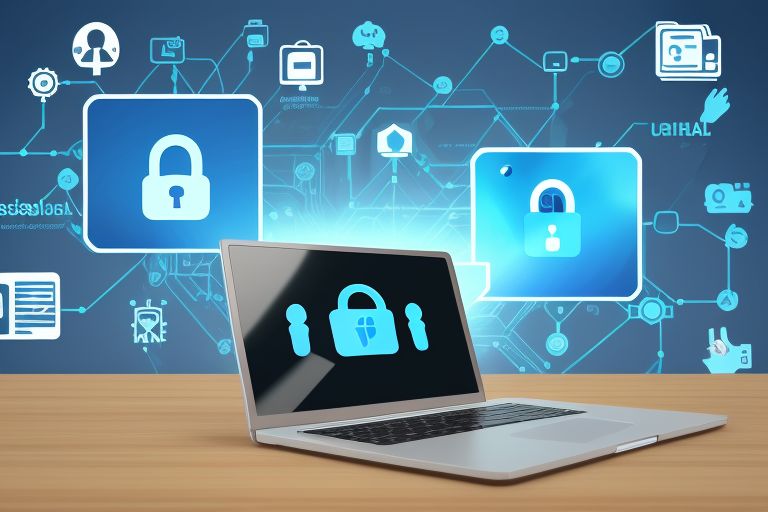In today’s digital age, online safety has become a critical concern for individuals and businesses alike. With cyber threats evolving at an unprecedented pace, understanding how to protect yourself online is no longer optional—it’s essential. Did you know that a cyberattack occurs every 39 seconds, affecting one in three Americans each year? Whether you’re browsing social media, shopping online, or managing sensitive data, adopting best practices for online safety can safeguard your personal information and digital assets.
This article will guide you through the most effective strategies to enhance your online security. From creating strong passwords to recognizing phishing scams, we’ll cover everything you need to know to stay safe in the digital world. Let’s dive in and explore how you can protect yourself from cyber threats and enjoy a safer online experience.
Why Online Safety Matters
Online safety is not just about protecting your personal information—it’s about safeguarding your identity, finances, and even your mental well-being. Cybercriminals are constantly developing new tactics to exploit vulnerabilities, making it crucial to stay informed and proactive. Here are some key reasons why online safety should be a top priority:
- Identity Theft: Hackers can steal your personal information to commit fraud or access your financial accounts.
- Financial Loss: Phishing scams and malware can lead to unauthorized transactions or drained bank accounts.
- Data Breaches: Sensitive data, such as medical records or business information, can be exposed in large-scale breaches.
- Reputation Damage: Compromised social media accounts or leaked private information can harm your personal or professional reputation.
By understanding the risks and implementing best practices, you can significantly reduce your vulnerability to cyber threats.
Essential Online Safety Practices
Protecting yourself online doesn’t have to be complicated. By following these essential practices, you can build a strong defense against cyber threats:
1. Create Strong, Unique Passwords
Passwords are your first line of defense against unauthorized access. Avoid using easily guessable passwords like “123456” or “password.” Instead, create complex passwords that include a mix of uppercase and lowercase letters, numbers, and special characters. Consider using a password manager to generate and store unique passwords for each account.
2. Enable Two-Factor Authentication (2FA)
Two-factor authentication adds an extra layer of security by requiring a second form of verification, such as a code sent to your phone, in addition to your password. This makes it much harder for hackers to gain access to your accounts, even if they have your password.
3. Be Cautious of Phishing Scams
Phishing scams often involve emails or messages that appear to be from legitimate sources, such as banks or online retailers, but are designed to steal your information. Always verify the sender’s identity and avoid clicking on suspicious links or downloading attachments from unknown sources.
4. Keep Your Software Updated
Software updates often include security patches that fix vulnerabilities. Make sure to regularly update your operating system, apps, and antivirus software to protect against the latest threats.
5. Use Secure Networks
Public Wi-Fi networks are often unsecured, making them a prime target for hackers. Avoid accessing sensitive information, such as online banking, when connected to public Wi-Fi. Instead, use a virtual private network (VPN) to encrypt your internet connection and protect your data.
Advanced Online Safety Tips
For those looking to take their online security to the next level, these advanced tips can provide additional protection:
1. Monitor Your Online Presence
Regularly check your social media accounts and online profiles for any suspicious activity. Set privacy settings to limit who can see your information and be mindful of what you share online.
2. Encrypt Sensitive Data
Encryption converts your data into a code that can only be accessed with a key. Use encryption tools to protect sensitive files, emails, and communications from unauthorized access.
3. Back Up Your Data
Ransomware attacks can lock you out of your files until you pay a ransom. Regularly back up your data to an external drive or cloud storage to ensure you can recover your information in case of an attack.
4. Educate Yourself and Others
Stay informed about the latest cyber threats and share this knowledge with friends, family, and colleagues. Awareness is one of the most effective ways to prevent cyberattacks.
Real-World Examples of Online Safety in Action
Understanding online safety is one thing, but seeing it in action can make it more relatable. Here are a few real-world examples of how these practices can protect you:
Case Study: Avoiding Phishing Scams
Jane received an email claiming to be from her bank, asking her to verify her account details. Instead of clicking the link, she contacted her bank directly and discovered it was a phishing attempt. By staying vigilant, Jane avoided falling victim to the scam.
Case Study: The Importance of Software Updates
John’s computer was infected with malware after he ignored a software update notification. The update included a security patch that could have prevented the attack. This incident highlights the importance of keeping your software up to date.
Conclusion
Online safety is a shared responsibility that requires awareness, education, and proactive measures. By implementing the best practices outlined in this article—such as creating strong passwords, enabling two-factor authentication, and staying vigilant against phishing scams—you can significantly reduce your risk of falling victim to cyber threats.
Remember, the digital world is constantly evolving, and so are the tactics used by cybercriminals. Stay informed, stay cautious, and prioritize your online safety to enjoy a secure and worry-free digital experience. Your personal information, finances












Leave a Reply